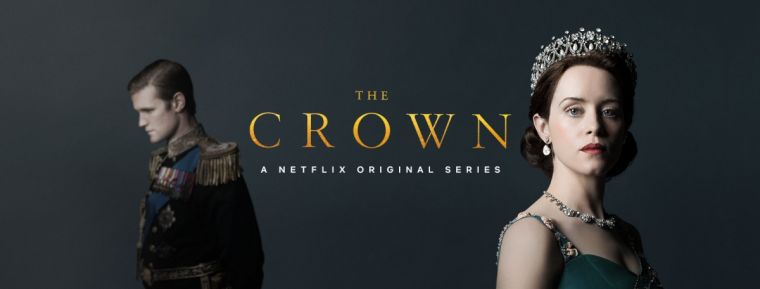[yasr_overall_rating]
In the past few weeks, the great TV show The Crown has been frequently on the news due to the recently disclosed pay gap between co-stars Claire Foy and Matt Smith. The producers have already apologized for the incident and promised that this will not be repeated in the coming seasons. The reason alleged for the gap: Matt Smith was more famous than Claire Foy at the time, since he played Dr. Who, who is a very well-known character in the United Kingdom.
It is a shame, however, to know that there was no renegotiation after the first season, which catapulted Claire Foy’s career. Not only has she been recognized by the viewers as the best actress in the show, but also by the critics and the industry, having been nominated for several awards.
The second season consolidates her, with her perfect interpretation of Queen Elizabeth II in the period between the end of the 50’s and the beginning of the 60’s.
The first three episodes focus on the relationship of the Queen and Philip, the Duke of Edinburgh (Matt Smith), who is shaken because of the hierarchy within the couple and of Philip’s supposed extramarital relationships.
There are also episodes dedicated to Princess Margaret (Vanessa Kirby), showing her unhappiness after the end of her romance with Peter Townsend. However, she meets Tony Armstrong-Jones (Matthew Goode) and goes back to being the cheerful person she was at the beginning of the show (anyone who knows a little about the royal family knows that her happiness, unfortunately, does not last long).
In the political field, with the death of Winston Churchill (John Lithgow), the Queen must deal with Anthony Eden (Jeremy Northam), who is then succeeded by Harold MacMillan (Anton Lesser) after the crisis of the Suez Canal.
The script, by Peter Morgan, remains extremely well structured, with stories with beginning, middle and end. The characters are also more developed. Philip, for example, gets more screen time and the story of his childhood is told in parallel to Prince Charles’ (Julian Baring) experience at the same boarding school.
Important moments in the Royal history are included, such as the Queen’s disastrous speech during a visit to the Jaguar factory, which has generated a number of criticisms of the monarchy, as well as the visit of US President John F. Kennedy (Michael C. Hall) and First Lady Jacqueline Kennedy (Jodi Balfour) to London.
The costumes remain impeccable, reproducing almost exactly the clothes worn at the time of the events. The sets are equally stunning, both from the interior of the palace and from exterior locations.
The score follows the intensity of the first season, with songs composed by Rupert Gregson-Williams that increase the level of tension in several situations.
The best thing about the show, however, remains Claire Foy’s performance, which brings me back to the beginning of the text: how is it possible that she earned a lower salary than Matt Smith? It is even more shocking given that this is a show about a woman in a position of power in an era when men dominated the scene.
If in the first season she was already magnificent, in this second season she fully became the Queen. The way she walks, holds her purse, talks – absolutely everything is spectacular. The best scene, in my opinion, is in the last episode, when the Queen confronts Prime Minister MacMillan and has a great monologue on the cowardice of elected politicians.
As previously announced, the main cast will be replaced, as the characters age a decade. Helena Bonham-Carter was confirmed in the role of Princess Margaret and Olivia Colman will play the Queen. She will, therefore, have the difficult task of replacing Claire Foy. At least she will be sure that she will be paid properly, regardless of who is playing the Duke of Edinburgh.




